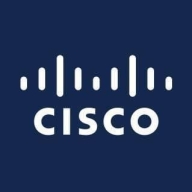

Cisco Secure Endpoint and Deep Instinct Prevention Platform are leading solutions in endpoint security. Cisco Secure Endpoint appears to have an upper hand in active threat response and customer service, while Deep Instinct shines in pre-execution prevention and accuracy.
Features: Cisco Secure Endpoint offers robust threat detection, remediation capabilities, and comprehensive reporting features. Deep Instinct Prevention Platform is known for AI-driven pre-execution prevention, a low false-positive rate, and its autonomous functions.
Room for Improvement: Cisco Secure Endpoint users suggest enhanced integration with other security tools, better offline protection, and interface improvements. Deep Instinct Prevention Platform could benefit from more robust data forensics, analytics capabilities, and enhanced reporting features.
Ease of Deployment and Customer Service: Cisco Secure Endpoint is often noted for a straightforward deployment process and faster, more responsive customer support. Deep Instinct Prevention Platform users also report smooth implementation due to its autonomous functions, though its customer service could improve in response times.
Pricing and ROI: Cisco Secure Endpoint has higher initial setup costs but provides substantial ROI with comprehensive threat management. Deep Instinct Prevention Platform offers competitive pricing and delivers strong ROI through reduced operational interference and advanced preventive measures.
Cisco has good technical support, especially considering these are newer solutions compared to traditional routing and switching products.
Technical support from Deep Instinct Prevention Platform is fantastic.
Cisco Secure Endpoint is definitely scalable.
We have not encountered any problems.
The forensic capabilities need enhancement, especially for deep forensic data collection.
Cisco is aggressive in pricing, making it competitive and sometimes even cheaper than other good products like CrowdStrike, Microsoft Defender, or SentinelOne.
The licensing is very competitively priced, better than all other solutions.
Cisco Secure Endpoint is very good in machine learning, which allows it to secure offline contents even if not connected to the internet.
| Product | Market Share (%) |
|---|---|
| Cisco Secure Endpoint | 1.5% |
| Deep Instinct Prevention Platform | 0.7% |
| Other | 97.8% |


| Company Size | Count |
|---|---|
| Small Business | 21 |
| Midsize Enterprise | 14 |
| Large Enterprise | 21 |
| Company Size | Count |
|---|---|
| Small Business | 10 |
| Midsize Enterprise | 4 |
| Large Enterprise | 5 |
Cisco Secure Endpoint is a comprehensive endpoint security solution that natively includes open and extensible extended detection and response (XDR) and advanced endpoint detection and response (EDR) capabilities. Secure Endpoint offers relentless breach protection that enables you to be confident, be bold, and be fearless with one of the industry’s most trusted endpoint security solutions. It protects your hybrid workforce, helps you stay resilient, and secures what’s next with simple, comprehensive endpoint security powered by unique insights from 300,000 security customers and deep visibility from the networking leader.
Cisco Secure Endpoint was formerly known as Cisco AMP for Endpoints.
Reviews from Real Users
Cisco Secure Endpoint stands out among its competitors for a number of reasons. Two major ones are its ability to enable developers to easily secure their endpoints with one single operation using its management console and its advanced alerting techniques.
Tim C., an IT manager at Van Der Meer Consulting, writes, "The solution makes it possible to see a threat once and block it everywhere across all endpoints and the entire security platform. It has the ability to block right down to the file and application level across all devices based on policies, such as, blacklisting and whitelisting of software and applications. This is good. Its strength is the ability to identify threats very quickly, then lock them and the network down and block the threats across the organization and all devices, which is what you want. You don't want to be spending time working out how to block something. You want to block something very quickly, letting that flow through to all the devices and avoiding the same scenario on different operating systems."
Wouter H., a technical team lead network & security at Missing Piece BV, notes, "Any alert that we get is an actionable alert. Immediately, there is information that we can just click through, see the point in time, what happened, what caused it, and what automatic actions were taken. We can then choose to take any manual actions, if we want, or start our investigation. We're no longer looking at digging into information or wading through hundreds of incidents. There's a list which says where the status is assigned, e.g., under investigation or investigation finished. That is all in the console. It has taken away a lot of the administration, which we would normally be doing, and integrated it into the console for us."
Deep Instinct PREVENTS >99% of UNKNOWN threats like ransomware and zero-days before they land inside your environment – not after. With both an agentless and agent-based approach, we ensure file-based and fileless attacks are prevented. To achieve this, Deep Instinct is pioneering the use of deep learning AI to prevent threats in <20ms, without requiring calls to the cloud for threat intelligence. Our ability to scale to the needs of the enterprise is unprecedented as is our delivery of the industry’s lowest false positive rate of <0.1%.
The Deep Instinct Prevention Platform combines industry-leading static analysis based on the only deep learning framework dedicated to cybersecurity and includes two solutions:
To learn more, visit: https://www.deepinstinct.com.
We monitor all Endpoint Protection Platform (EPP) reviews to prevent fraudulent reviews and keep review quality high. We do not post reviews by company employees or direct competitors. We validate each review for authenticity via cross-reference with LinkedIn, and personal follow-up with the reviewer when necessary.